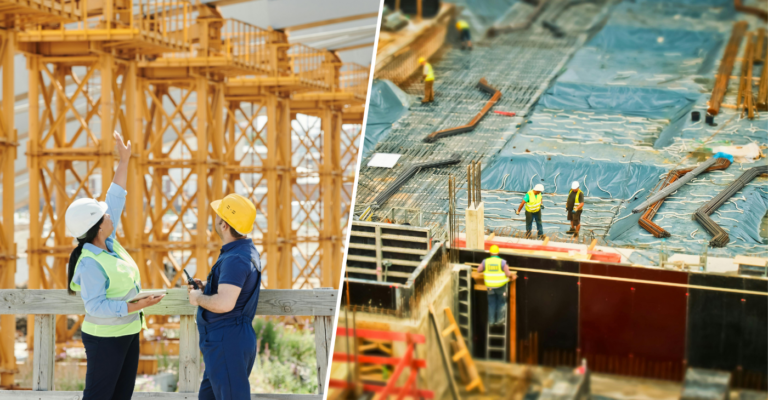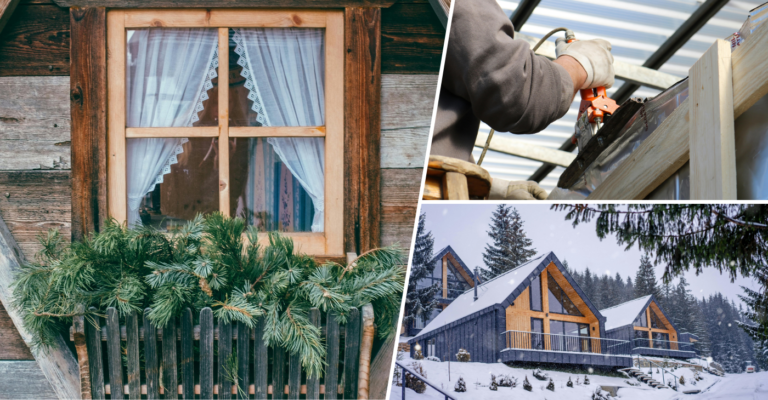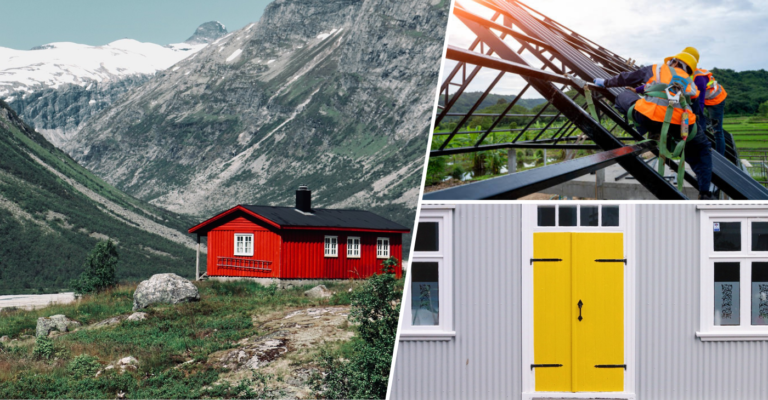Guide: Non-standard construction insurance for unconventional homes
Non-standard construction insurance is vital for homes built with unconventional materials or methods. These properties differ from the typical brick-and-mortar structures, often using materials like timber, cob, or straw bales. Because of this, they pose higher risks for insurers and require specialised coverage. Non-standard homes can include eco-friendly buildings, listed properties, or houses with flat or thatched roofs. The unique construction methods and materials mean repairs are often costlier, and specialised tradespeople may be required. Homeowners need tailored insurance to fully protect their investment and ensure adequate coverage in case of damage.
What is non-standard construction?
Non-standard construction refers to buildings made from unconventional materials. These homes might feature timber frames, steel structures, or even eco-friendly materials like hempcrete or straw bales. Standard insurance policies are often inadequate for these types of homes, which require specialised coverage.
Many properties fall under this category, including thatched cottages, listed buildings, and modular homes. Even modern eco-homes using innovative techniques or materials are classified as non-standard. From a construction perspective, each of these methods involves different structural behaviours and repair challenges.
Non-standard construction often results from historical methods or modern experimentation. Buildings using wattle and daub, rammed earth, or Stramit panels are examples. These niche techniques require a professional understanding for proper construction, repair, and, importantly, insurance.
Why is non-standard construction riskier to insure?
Non-standard construction is considered riskier due to the specialised materials and expertise required for repairs. For example, thatched roofs are more vulnerable to fire, and timber-framed homes face risks of rot and pest infestation. Repairing these requires skilled labour, which can be costly and hard to source.
Furthermore, properties built with materials like cob or rammed earth need specific maintenance to avoid structural damage from environmental factors like moisture or temperature changes. This makes them more difficult to insure, as the risk of claims is higher. Non-standard homes are also more vulnerable to natural disasters, such as flooding or subsidence.
As a result, insurers often charge higher premiums or impose stricter terms on these properties. For homes using recycled or renewable materials, there may also be challenges in finding replacement parts, further complicating the insurance process. The complexities of maintaining non-standard properties make comprehensive insurance essential.
The role of non-standard construction insurance
Non-standard construction insurance is designed to cover the specific risks associated with these unique buildings. A standard home insurance policy doesn’t account for the cost of repairs or materials like thatched roofing, lath and plaster, or insulated concrete forms (ICF). Specialised insurance is necessary to ensure proper protection.
This type of insurance considers the unique aspects of the property, including its materials and construction techniques. For example, a home with pan-tile roofing will require different considerations than one with a traditional slate roof. The policy will also take into account whether the building is listed, as restoring historic buildings often requires costly and accurate restorations.
Without this tailored insurance, homeowners risk facing financial losses in case of damage. Non-standard construction insurance provides coverage for both structural damage and contents, making it indispensable for owners of niche properties. It’s a critical safeguard against unforeseen risks that standard policies won’t cover.

Who needs non-standard construction insurance?
Homeowners with listed buildings, eco-homes, or properties made of timber frames require non-standard insurance. These homes, built with alternative methods or located in high-risk areas, need specialised protection. Owners of properties in flood zones or those prone to subsidence should also seek non-standard policies.
This insurance is also necessary for owners of modular homes or properties using prefabricated materials. Since these structures often use non-traditional methods, standard insurance won’t fully cover them. The same goes for homes built with green roofs or solar panel cladding, which fall into non-standard categories.
Non-standard insurance is also required for properties undergoing major renovations. During construction, the materials and methods used might deviate from standard practice, increasing the need for a more tailored policy. It’s essential for protecting the home and ensuring full coverage in the event of damage.
Special coverage requirements
Special coverage requirements vary depending on the type of non-standard construction. For example, homes with thatched roofs need coverage that accounts for fire risks. Properties using cob walls or adobe require insurance that includes protection against water damage, which can compromise the integrity of these materials.
Buildings made from recycled materials, such as Stramit panels or insulated concrete forms, may have higher rebuild costs. These structures often require specialised skills and materials to restore, so their insurance policies must reflect the true cost of repairs. Furthermore, homes with innovative materials may need additional coverage for unforeseen issues.
For listed buildings, special coverage is crucial to meet the legal requirements for restoration. Any work on these properties must use historically accurate materials and techniques, which can be costly. A non-standard policy ensures that homeowners are fully covered for any restoration work required by heritage organisations.
The pricing of non-standard construction insurance
Non-standard construction insurance tends to be more expensive due to the increased costs of repairs. Homes made from timber, steel, or thatched materials have higher risks of fire, water damage, or rot. These risks translate to higher premiums, as the cost of sourcing materials and labour is often elevated.
Insurers also take into account the property’s location. A home built in a flood zone or with timber framing in a high-moisture area will attract higher premiums. Similarly, buildings made from rammed earth or straw bale construction may require niche expertise for repairs, which further increases insurance costs.
Moreover, homes with sustainable features, like green roofs or solar cladding, are still considered experimental by many insurers. These elements are factored into the premium due to the potential difficulty in repairing or replacing them. All these factors make non-standard construction insurance necessary but more costly.
Challenges in finding non-standard construction insurance
Finding non-standard construction insurance can be challenging, as many mainstream insurers don’t cover niche materials or construction methods. For example, homes with corrugated iron roofs or weatherboard siding might need a specialist provider who understands the risks associated with these materials.
Insurers are often hesitant to cover properties with asbestos or homes located in flood-prone areas without imposing strict limitations. This can result in homeowners facing restricted coverage or exorbitant premiums. For properties using eco-friendly materials like hempcrete, finding an insurer familiar with these methods can be difficult.
Specialist insurers are often the best route for securing proper coverage. These insurers focus on non-standard properties and understand the specific risks involved. They can provide policies that cater to the unique needs of the homeowner, offering better protection and more appropriate terms than mainstream insurers.
Working with specialist insurers
Working with a specialist insurer is key to ensuring comprehensive coverage for non-standard properties. These insurers understand the risks associated with materials like wattle and daub, rammed earth, or Stramit panels. They also have access to networks of contractors skilled in these materials.
Specialist insurers provide policies tailored to unique construction types, which mainstream providers may not cover. They also consider the long-term maintenance of materials like cob or lath and plaster, ensuring homeowners are covered for routine repairs. This expertise is invaluable when it comes to protecting unusual homes.
Moreover, specialist insurers often have better access to resources for repairs and restoration. This is especially important for listed buildings, which require historically accurate materials. By working with these experts, homeowners can ensure that their non-standard properties are fully protected, regardless of the challenges they may face.
Importance of accurate valuation
Accurate valuation is critical when insuring non-standard homes. Many of these properties use materials like pan-tile roofing, weatherboard, or adobe, which can be expensive to replace. A proper valuation ensures the insurance policy covers the full cost of rebuilding, should any damage occur.
For homes with bespoke features, such as handmade tiles or timber frames, ensuring that the replacement costs are accurately reflected in the policy is crucial. Many non-standard materials are either rare or require skilled labour, making repairs more costly than standard homes. Proper valuation helps avoid underinsurance.
Additionally, for listed buildings or historic properties, the cost of restoration can be significantly higher. Policies must reflect the true cost of using historically accurate methods and materials, ensuring that homeowners can fully restore their properties if needed. Under-insuring these properties could lead to significant financial loss.

The risks of inadequate coverage
Inadequate coverage for non-standard homes can result in significant financial risk. If a homeowner doesn’t have the correct insurance, they may find that unique materials like cob, rammed earth, or solar cladding aren’t covered, leaving them to foot the bill for repairs. This can be especially costly for listed properties.
Many mainstream insurance policies exclude non-standard construction materials, meaning claims for damage may be denied. For example, if a thatched roof catches fire and the policy doesn’t include specialised fire protection, the homeowner may not receive adequate compensation. This gap in coverage can be financially devastating.
Additionally, if a property isn’t insured correctly, it may affect the homeowner’s ability to sell or mortgage the property. Mortgage lenders often require comprehensive coverage for non-standard homes, making it essential for homeowners to secure the right insurance from the start.
Reducing insurance premiums
To reduce insurance premiums, homeowners can take steps to mitigate risks associated with their non-standard properties. For example, thatched roofs can be protected by installing fire-retardant treatments and ensuring chimneys are properly maintained. These measures lower the risk of fire, potentially reducing premiums.
For properties with green roofs or eco-materials, implementing drainage systems and regular maintenance can minimise water damage. Timber-framed homes can benefit from pest control measures and regular inspections for signs of rot or decay. These preventative measures can help lower the maintenance costs associated with their non-standard construction. Installing fire alarms, sprinkler systems, or flood defences in vulnerable areas can also provide extra protection. Not only does this reduce risks, but it can also lower premiums by proving to insurers that the property is well-protected against damage.
Another option is to invest in sustainable upgrades that reduce the environmental risks tied to non-standard materials. This might include better insulation for homes with cob walls or adding weather-resistant coatings to properties with timber cladding. Insurers are often more willing to offer better rates when they see proactive efforts to protect non-standard materials from wear and tear.
What to consider when choosing non-standard construction insurance
When selecting non-standard construction insurance, there are several key factors to consider:
- Ensure that the policy provides adequate coverage for both the structure of your home and its contents. Consider the cost of rebuilding or repairing your property in the event of a total loss.
- Carefully review the policy exclusions to understand what isn’t covered. For example, some policies may exclude damage caused by specific risks, such as flooding or subsidence.
- Depending on your location and the specific risks associated with your property, you may need to add extra coverage, such as flood insurance, to your policy.
- Non-standard construction insurance can be more expensive than standard home insurance, so it’s essential to compare quotes from multiple providers to find the best rate.
- Choose an insurance provider with experience in non-standard construction insurance. Look for customer reviews and ratings to ensure that the provider has a good track record of handling claims and providing customer service.
Conclusion – Ensuring protection for your non-standard property
Non-standard construction insurance offers essential protection for homes built with unusual methods or materials. Whether dealing with timber frames, thatched roofs, or innovative eco-materials, this type of insurance ensures coverage for higher repair costs and risks. Without the right policy, homeowners could face significant financial challenges in case of damage. As construction techniques continue to evolve, the demand for specialised insurance will grow, making it crucial for homeowners to seek policies that meet their unique needs. This insurance not only safeguards the property but also offers peace of mind, knowing that their home is fully protected.







